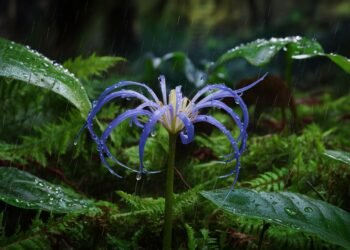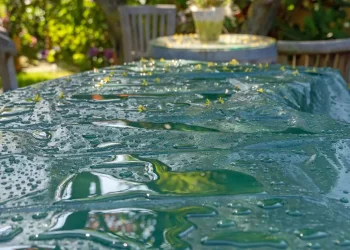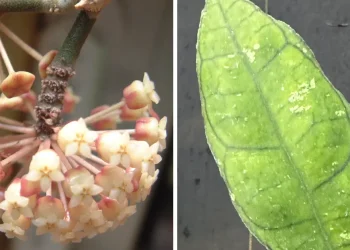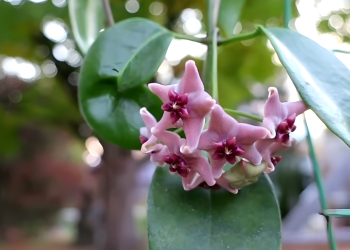Why are the corn stalks red at the bottom? That was a message I got last week from a friend of mine. We’re both very curious, and when he saw red corn stalks on his way to work, he had to ask.
My immediate answer was that it is probably caused by stress. Which later on turned out to be true when I dug into this topic a little more.
The red hue on corn stalks or leaves is caused by the overabundance of sugars. This happens when some stressor has an effect on the corn and slows down its growth. As a result, the plant has nowhere to store the surplus sugars, which are actively produced via photosynthesis and turn red.
But what are the stressors that can cause corn stalks and leaves to turn red? Should you be concerned and do something? That’s our goal to find out today, so let’s dive in!
What Causes Corn to Turn Red
The red hue of corn can appear primarily due to an excess accumulation of sugars in the plant tissues, particularly in the leaves and stalks.
When corn plants experience stress, such as insufficient water, nutrient imbalances, or insect attacks, they respond by increasing sugar production through photosynthesis.
However, two other things can happen during this time.
- These sugars can’t be efficiently transported throughout the plant.
- The undergoing stress manifests as a stunted or slowed growth. As a result, the plant has few or no kernels in which to move the sugar.
In every case, the sugar starts to accumulate in the leaves and stalks, giving rise to the red pigmentation we observe.
Behind this is a pigment called anthocyanin. This natural pigment is responsible for red, purple, or blue hues in various plant parts. It is normally present in corn plants but remains mostly invisible because of other pigments that dominate, like chlorophyll.
It might seem unrelated, but there’s an intriguing link between sugar levels and the amount of anthocyanin.
The red pigment anthocyanin, is synthesized in the same metabolic pathway as some of the compounds involved in sugar production.
When the plant becomes stressed, it’s not like it purposefully only creates more sugar. But, different pathways become more active, leading to the accumulation of both sugars and anthocyanins in the plant’s tissue.1
What Factors Influence the Red Hue on Corn Stalks
Many factors can lead to the carousel of change in the corn. The most common stressors that can cause the accumulation of sugars, thus the accumulation of anthocyanins, and the change in the color of the corn to red are temperature stress and inadequate pollination.
Now, let’s take a closer look at them and highlight the correct practices when caring for corn.
1. Temperature Stress
During periods of scorching heat and prolonged exposure to high temperatures, corn plants can experience what’s commonly known as heat stress.
This stress may not be noticeable on the plant, but the kernels didn’t enjoy that too much, and many of them probably stopped developing. And in corn plants, the kernels are the primary storage site for sugars. Because there are not enough of them, the sugar will start accumulating elsewhere.
In other cases, temperature stress can manifest as the wilting of leaves and an overall reduction in the plant’s health.
On the flip side, during early spring, the nights can still be pretty cold. Particularly, big temperature differences during the day and night can cause the red coloration of corn.
2. Inadequate Pollination
Inadequate pollination highly relates to high temperatures. Heat, especially combined with inadequate watering, can have devastating effects on silking – the development of female parts on the corn, the long, hair-like strands.
If the corn is slow to silk, most pollen flying around can already be gone. Additionally, excessive heat can hinder pollen production in the first place.
Both of these factors contribute to inadequate pollination, resulting in the plant’s inability to develop a sufficient number of kernels – which are not only what we want to eat or feed to the cattle but also the place the plant stores sugars in. As each kernel requires the fertilization of one silk by one pollen.
3. Other Factors Contributing to Red Corn
Temperature stress or inadequate pollination is not all. There are other factors that can highly contribute to the red hue in corn.
Wrong watering practices can be one of them. Overwatering can lead to root rot and hinder the plant’s ability to absorb essential nutrients, ultimately stunting its growth. But underwatering is also not the best approach. Underwatering can result in dry, stressed plants with shallow root systems that struggle to access water and nutrients.
Furthermore, when corn becomes a target for pests or falls victim to diseases, it can become stressed, triggering a defensive response.
Lastly, let’s not forget that there are also corn varieties that are naturally more to the purple or red side.
Can you Reverse the Red Color on the Corn?
Unfortunately, once the red pigment accumulates in the corn parts, there’s no way to reverse it. The pigmentation will persist throughout the season.
But, you should still address the underlying causes to promote healthy growth. If everything goes well, your exemplary care can promote normal chlorophyll production, which can reduce the intensity of the red coloration but not completely remove it.
And one last unpleasant news… as the red pigment, anthocyanin, is necessarily associated with fewer kernels, you should expect lower yield this season.
Before you go…
Now that you know what causes corn stalks to turn red, there’s one other very common question among gardeners. That’s about how many corn seeds you should plant per hole, and what if they all germinate? It happened to me just recently for the first time that all seeds sprouted, and it wasn’t rare to see multiple corns growing very close to each other. If you are wondering what I did in that situation, make sure to check out my article…













